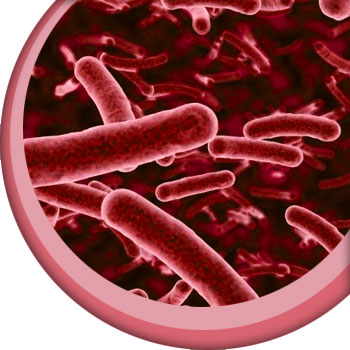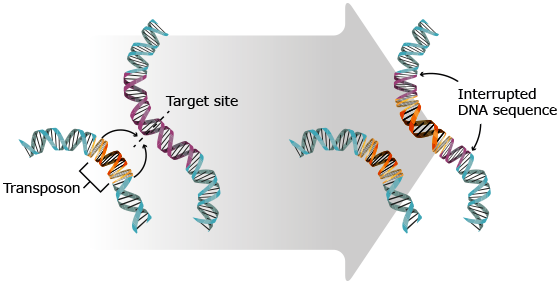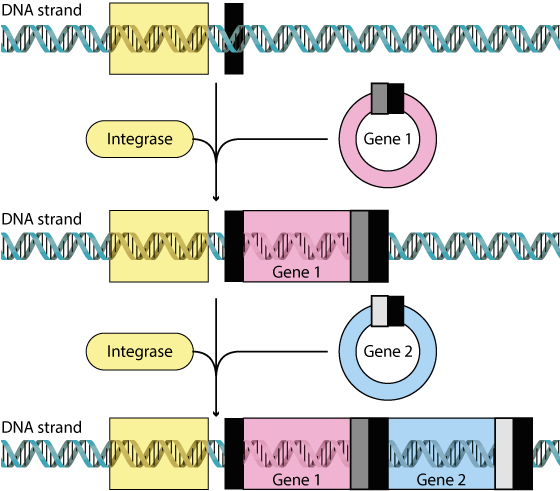Multidrug Resistance
Multidrug resistance is currently a major concern for human health, and occurs when bacteria exhibit cross-resistance to several unrelated drugs. This may be achieved through efflux pumps that are able to transport a variety of compounds out of the bacterial cell, but can also be due to an accumulation of independent resistance mechanisms.47 This is partially facilitated by transposons and integrons which allow genes encoding different mechanisms to accumulate together.
Transposons4 are sections of DNA which can transfer between plasmids and chromosomes. Integration of the transposon involves replication therefore a copy is present in both DNA molecules. Transposons may include several resistance genes, and may transfer to other bacteria on conjugative plasmids. Once in another bacterium, they may move to the new host’s chromosomal DNA or indigenous plasmids in order to replicate.
Diagram of transposon


 Integrons4 are large mobile DNA units composed of several gene cassettes (each gene cassette comprises a resistance gene and recognition site) which may be located on transposons. The integron also contains a gene for the enzyme needed to insert cassettes into the integron.
Integrons4 are large mobile DNA units composed of several gene cassettes (each gene cassette comprises a resistance gene and recognition site) which may be located on transposons. The integron also contains a gene for the enzyme needed to insert cassettes into the integron.
In Enterobacteriaceae for example, the transfer of integron carrying elements is important for the development of multidrug resistance, and combined resistance to both ampicillin and TMPS has been shown to be the starting point for the development of resistance to additional beta-lactams, aminoglycosides, cephalosporins, and ciprofloxacin.59 A study in Japan found faecal isolates of Salmonella enterica serovar Stanley from cattle showing resistance to ampicillin, chloramphenicol, streptomycin, sulfamethoxazole, oxytetracycline, trimethoprim and kanamycin, with several resistance genes in these isolates being located on integrons.60
Diagram of integron
Disclaimer: Indications and doses may vary between products. The antimicrobials listed may constitute an off licence use of the product and as such should only be used according to the ‘Cascade’, further details of which are available on the RCVS, VMD and NOAH websites. Veterinary surgeons are advised to carefully check the Summary of Product Characteristics (SPC) before prescribing a product and obtain informed owner consent where required.

